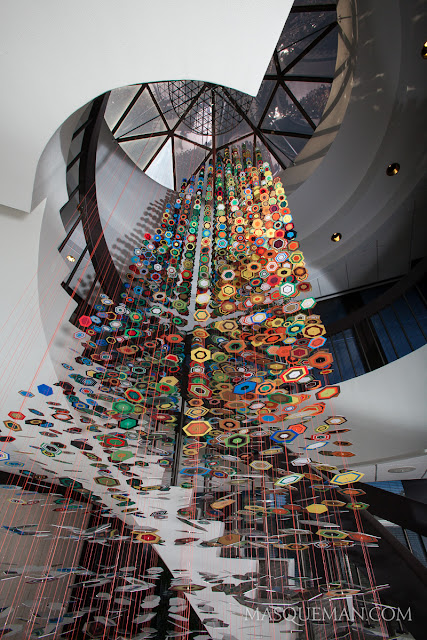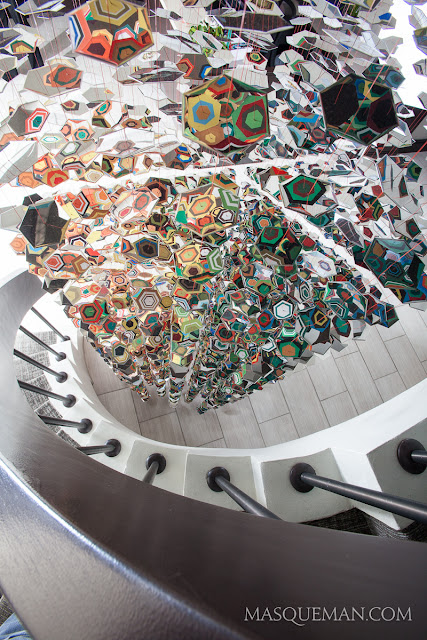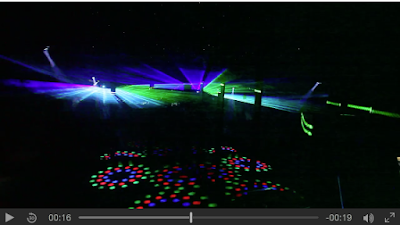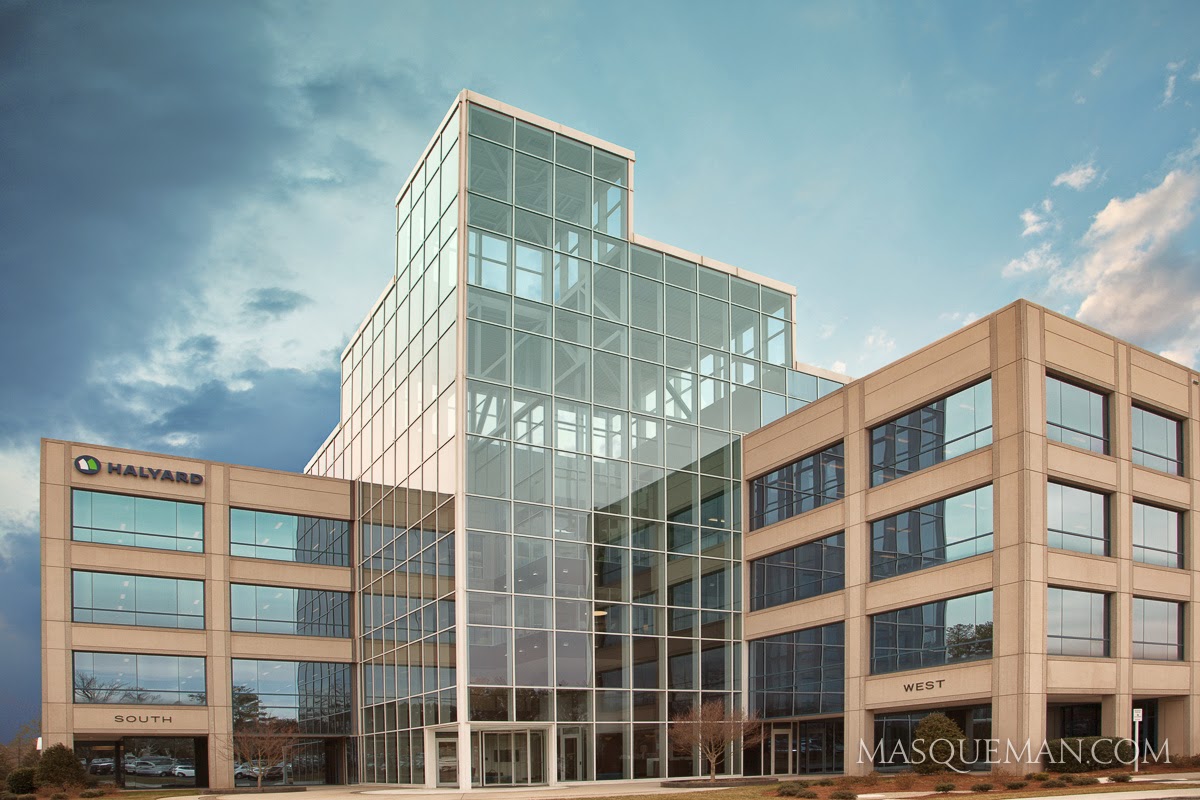If you are the type of person who gets excited about home automation and advanced control of the distributed A/V, heating, lighting, security and window blind components in your house, then you should consider giving them a call. All the information you need is located at www.pavatlanta.com, which is a web site I completed for them last year.
I got a glimpse into what PAV does by taking photos of various installations in a recently renovated mansion in north Atlanta. At first, this may just look like a regular living room. The great thing about the home automation products is that they work in the background, and are accessed using television screens, iPads, iPhones and wall control panels. You may never even know that they are there, until you need them.
 |
| Behind-the-Scenes: How the camera would see the terrace without my flashes |
A tilt shift lens would have been handy to dial out the perspective, but that is a rental for me. As such, I had to remove the extreme perspective in Photoshop. There are limited to what looks realistic. The very first image is what a tilt-shift lens might have produced. I’m not sure which I prefer since the second slightly distorted one looks more epic.
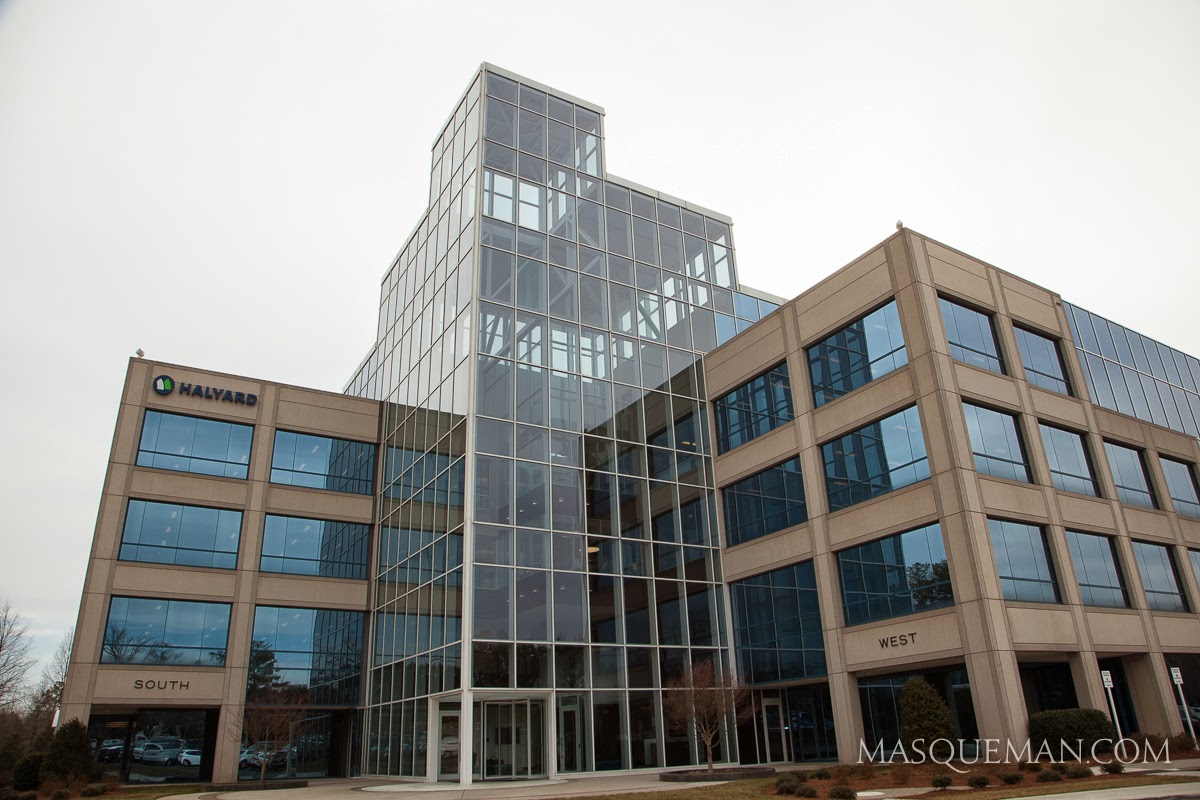 |
| Out of camera capture… |
 |
| The shiny wood paneling reflected everything. This looks great in person, but can be difficult to accurately photograph. |
The materials in the room ranged from dark glossy wood paneling and tile to flat white linen and shiny chrome vases. I knew that I would not be able to capture the extreme latitude of the room with a single exposure, so I planned to find the best angle and then lock the scene down on my tripod.
To complicate things, there were at least five different light sources with their own color temperature…. blue daylight, green fluorescents, yellow tungstens, white LEDs and my flashes. Each light source was affecting colors and creating pools of localized color zones.
 |
| There were large areas of white in this room which were easily affected by colors of the different light sources. |
Since I could not simply gel my flash to match all the light temperatures, I ended up shooting each part of the scene separately and composting them later. This allowed me to expose for highlights, midtones and shadows to create a high-dynamic range photo while controlling the color casts. This also allowed me to combine the bright scene outside the window with the relatively dark interior… impossible to do in one shot.
When lighting rooms with flash, try not to overpower ambient light sources that give the room its character. In the photo above, I shot a flash through the frosted glass shower wall which is a key feature of the room’s swanky design. You can see they spent a lot of money on custom glass walls in the restroom.
I also took photos of the room next door which was more of a standard hotel room. It’s pretty interesting to see the difference between the two. This room had the gauze-like sheer curtain that would have helped tame the other room’s extreme lighting conditions. Oh well.
The last shot looks easy, but it was difficult to hide the flashes while lighting both rooms. Again, the shiny materials revealed all light sources so I had to be sneaky where I put my lighting.
While in their office I also took photos of their new conference room which looks like it would be a great place to get business done or maybe challenge your friends to XBOX 360 on their big display screen.
As a surprise, our client also asked us to also make photos of 5 groups of workers in different departments. This had not been discussed previously, but it provides a great lesson in being prepared. Like many photographers, I tend to load up my car with backup cameras, extra lights and gear for such events. It is better to have too much and be ready than tell a client that I can’t do what they ask.
Instead of picking 7 locations and 7 different setups, we chose 1 location near the front entrance that had metallic mirror tile, mixed color lighting and a brushed aluminum logo. This presented a lighting challenge since any lights that I used would bounce back into to the lens revealing themselves as annoying hotspots. Even my largest umbrella diffusers did not tame the reflections. I decided to bounce the flashes off of the hallways walls to give a soft light. Think of this as the photographic equivalent of a bank shot.
For the top brass, we went very informal which was a refreshing change from stuffy CEO power portraits.
